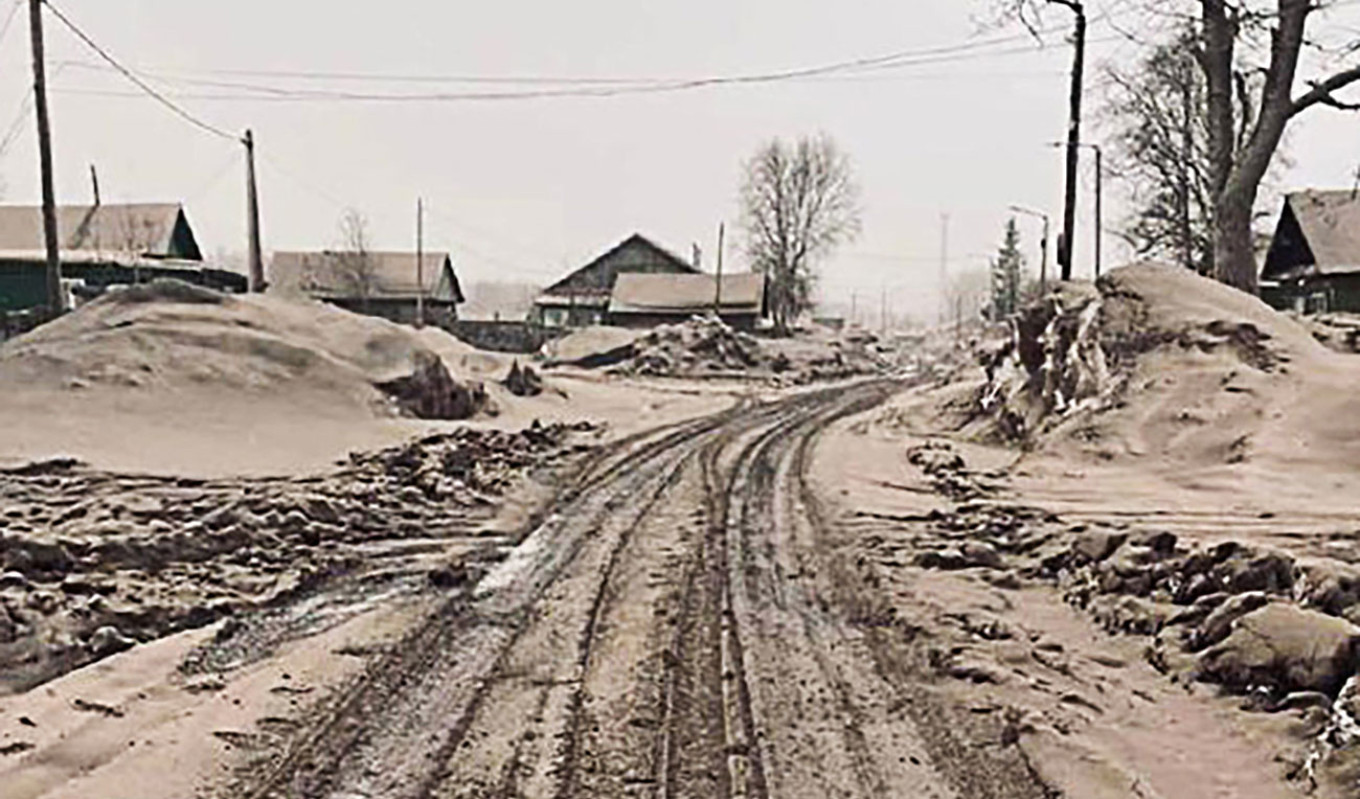A powerful volcanic eruption in Russia’s Kamchatka region has spewed massive plums of ash across a large swathe of the region, blanketing a nearby village and disrupting air traffic, media reported Tuesday.
Monitors in the far-flung peninsula issued an aviation “code red” after the Shiveluch volcano in Kamchatka’s eastern range released an ash cloud that drifted hundreds of kilometers to the north and southwest.
In the village of Klyuchi, situated 50 kilometers south of the volcano, residents woke to darkened skies and an otherworldly landscape blanketed in brown ash. Images shared online showed people walking through the town in hazmat suits.

“Ashfalls are common, and they happen about once or twice a year, so people are already used to it,” one resident of Kluchyi told the Podyom news outlet. “But I’ve never seen so much before.”
Scientists said that the last time Shiveluch released such a large amount of ash in the area was in 1964.
“A layer of about 8.5 centimeters has already fallen and the ashfall continues,” Alexei Ozerov, director of the Institute of Volcanology and Seismology, told local media.
Kamchatka, a popular destination for adventure tourists, is located on the western arc of the Ring of Fire, a string of volcanoes that encircles the Pacific Ocean. The peninsula is home to more than 300 volcanoes, including 29 that are active.
Shiveluch, which means “smoking mountain” in the local indigenous Itelman language, is Kamchatka’s most active volcano, with frequent eruptions of magma and ash. The volcano is between 60,000 and 70,000 years old.
In early April, a magnitude 6.9 earthquake struck off the southern coast of Kamchatka, some 44 kilometers from the regional capital of Petropavlovsk-Kamchatsky.